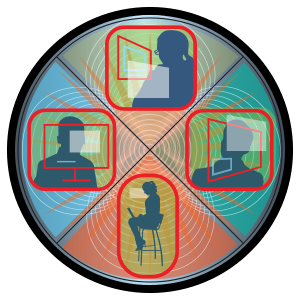
Before L&D leaders can develop a culture of learning or implement cutting-edge teaching technologies, they must look inward at their own structure, processes, and governance, and develop a stable yet flexible framework for delivering learning.
In this post, we draw on the discussion in Chapter 1 of Elevating Learning and Development about three basic options for L&D structural organization—centralized, decentralized, and hybrid—each of which offers advantages and disadvantages.
Choosing a backbone
The learning backbone is fundamentally about where the learning people sit in the organization. In the decentralized model, learning personnel are dispersed throughout a variety of business units. In the centralized approach, learning sits in HR or in its own freestanding space. A hybrid function, sometimes referred to as a federated structure, is a mix of both.
Weighing pros and cons
Research by the McKinsey Academy indicates that 23 percent of L&D functions are completely centralized, 46 percent are hybrid, and 27 percent are decentralized, while 4 percent of respondents didn’t know their L&D structure.Each backbone has advantages and disadvantages.
Centralized functions offer strong coordination through the central learning team, whose members report to a single learning or HR executive, which helps to avoid duplication of learning efforts and offers economies of scale. The function is clearly accountable for enterprise-wide budget, resources, L&D talent, external partnerships, vendor management, and standards and guidelines. However, there is a risk that centralized learning teams will be less attuned to the specific needs of business units.
Decentralized functions give ownership of learning initiatives to individual business units, enabling them to tailor initiatives to their specific functions, needs, and people. In this model, however, the learning function has limited oversight, and learning programs don’t have a clear connection with the C-suite. Programming may lack cohesion as a result.
Hybrid functions are becoming the norm in larger organizations. In this model, a central team develops professional and leadership-development programs, sets and enforces standards, and manages learning platforms and tools, while business units are responsible for technical learning (and, often, delivery of enterprise programs). This structure allows for better connections with business units while enabling more economies of scale, especially in systems. However, hybrid models can create communication and coordination challenges by blurring lines and causing confusion about who is in charge of what.
Four factors to determine the right backbone
The ideal place for the learning function in an organization is determined by four factors:
The parent organization. In principle, the L&D function serves the organization as a whole, no matter where it sits. The determination of whether it is centralized, decentralized, or a hybrid depends on the broader organization’s structure and size, and the locations of adjacent functions.
The mandate of L&D. The responsibilities and outcomes ascribed to the learning function also have implications for its organizational structure. A 2018 LinkedIn surveyfound that executives, people managers, and talent developers believe soft skills such as leadership, communication, and collaboration are a top priority—even over role-specific skills.The relative importance of these learning goals has implications for the learning function’s organizational backbone. A focus on leadership development, for example, would require the function to be aligned with corporate leadership—likely centralized within HR—while a strategy to develop role-specific, technical skills would need to be more aligned with individual business units.
The needs of learners. To deliver effective learning, L&D functions must understand the learners’ business context well enough to determine the real issues underlying a request; for example, “we need communication training” might mean “employees are resisting a change because they don’t know how to manage a critical process.” Indeed, L&D professionals are often tasked with challenging and shaping business units’ understanding of skill development and how to deliver learning. They must also understand the more technical aspects of business units’ needs so they can accurately translate their needs and deliver learning that directly addresses those needs. The more technical the background, the more alignment is required between the L&D function and the various business units—which may require a hybrid or fully decentralized model.
The need for scale or resource efficiency. As noted above, centralized L&D functions can more easily avoid duplication of effort and can take advantage of economies of scale. In an organization where learning has limited funding relative to the number of employees, a centralized structure is more cost effective, though it may also be less responsive to emerging needs in business units.
It should be noted that all organizations, regardless of backbone, retain certain centralized capabilities—such as learning-technology platforms and digital content. For example, most organizations would choose not to maintain several learning-management-system platforms.
Once the structure of the learning organization has been chosen, the next step is to build an agile overlay to overcome the challenges inherent in that backbone. A future blog post will discuss how to mitigate the natural deficiencies of each approach—but every company needs to start by deciding for itself which backbone is the best fit.
